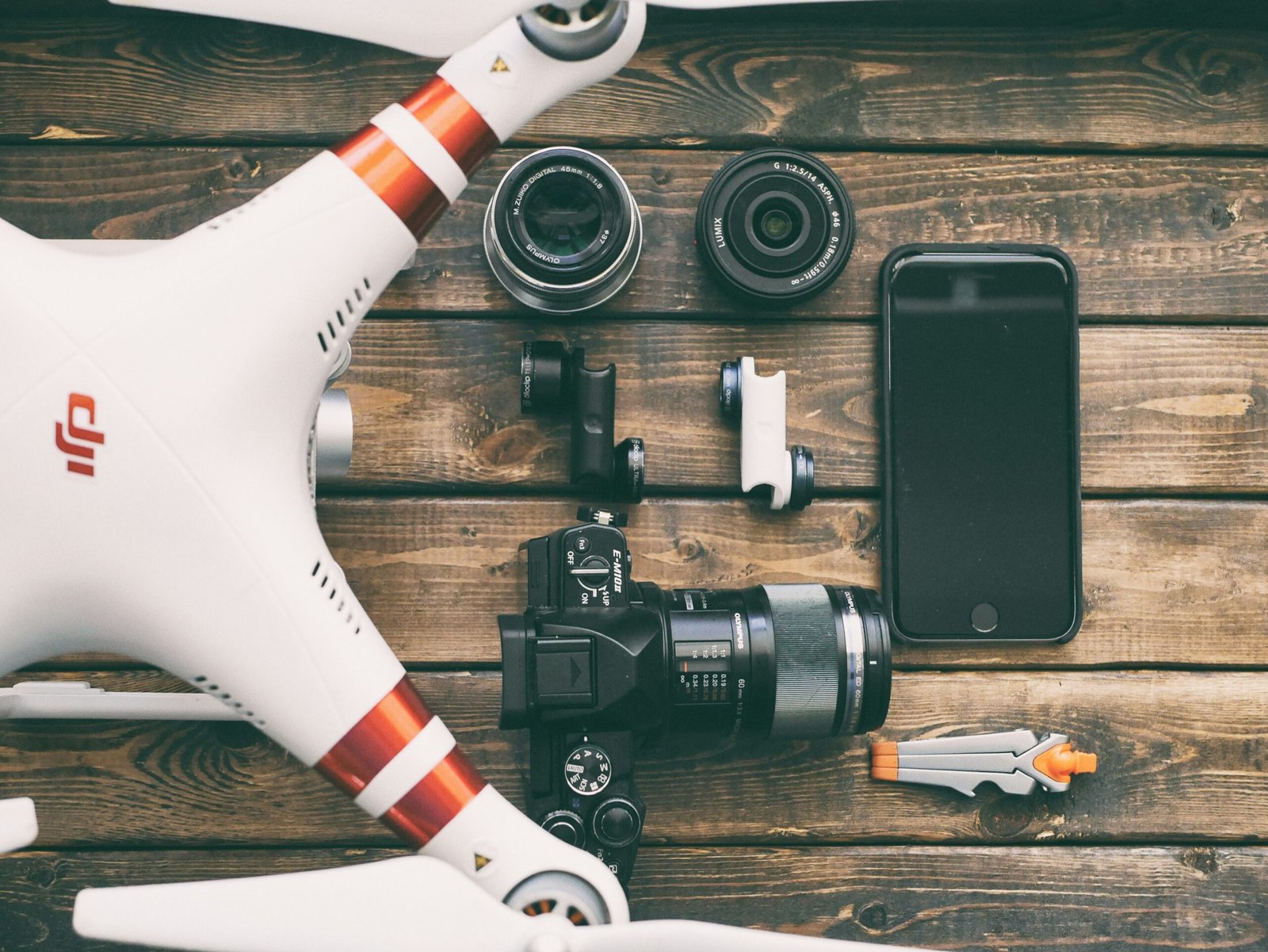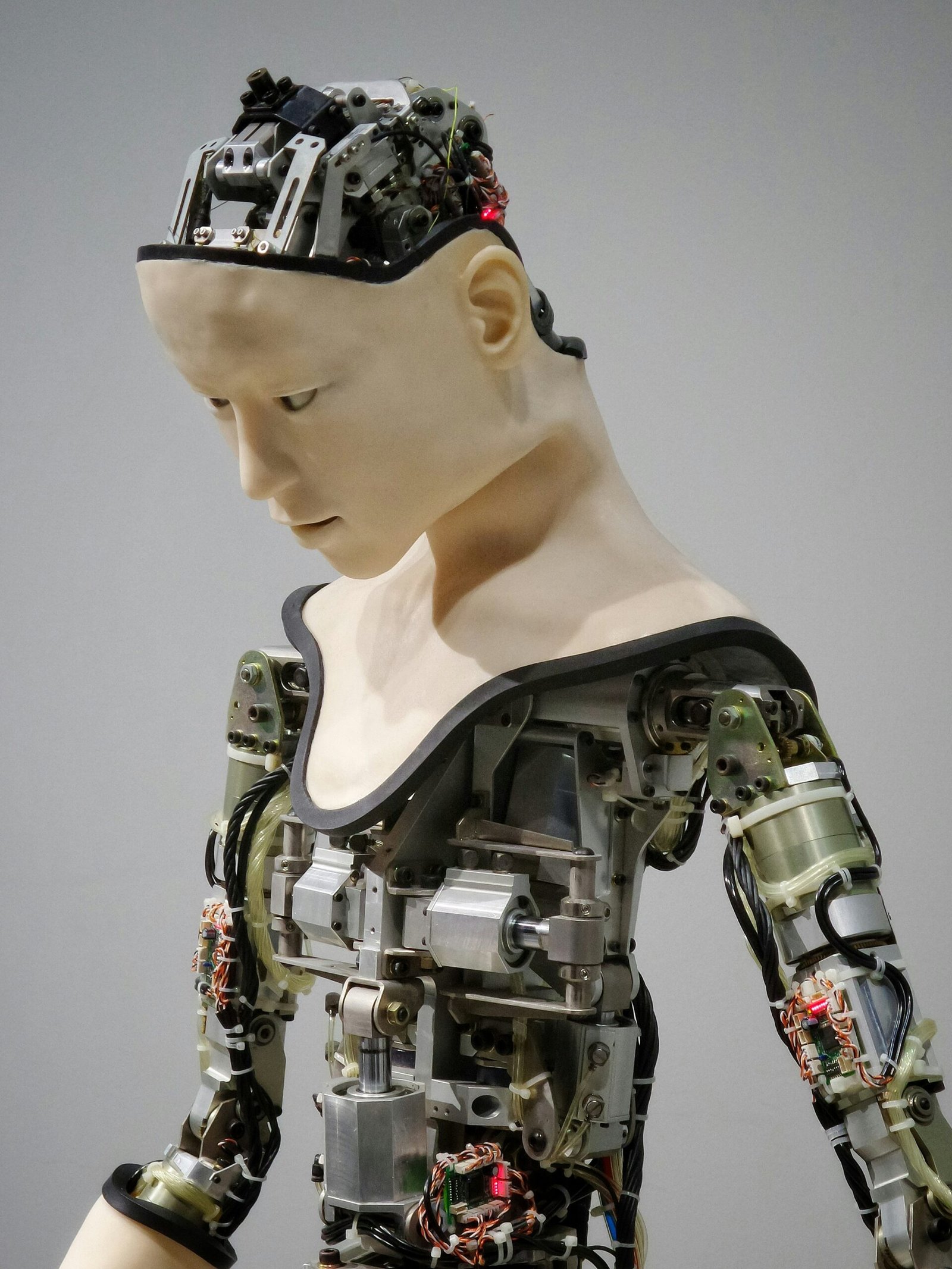Energy from the Sky: How Drones Can Generate Electricity

Photo by Aaron Burden on Unsplash
Introduction to Drone-Based Energy Generation
As the world grapples with climate change and increasing energy demands, the quest for innovative energy solutions has never been more urgent. One such pioneering approach is the utilization of drones to generate electricity. This concept, while seemingly futuristic, is grounded in the practical application of advanced technology to harness renewable energy sources. Drones, or unmanned aerial vehicles (UAVs), can be outfitted with specialized equipment designed to capture and convert energy from natural resources, contributing to a sustainable energy future.
The core idea behind drone-based energy generation revolves around the deployment of drones equipped with photovoltaic panels, wind turbines, or other renewable energy harvesting technologies. These drones can be operated in environments where traditional energy infrastructure is either impractical or impossible to establish. For instance, drones can soar to altitudes where wind speeds are optimal for energy generation or hover over remote areas with abundant sunlight. By tapping into these otherwise inaccessible energy reservoirs, drones offer a versatile and efficient means to produce electricity.
Furthermore, the adaptability of drones enables them to be deployed in various scenarios, from disaster relief operations to remote community electrification. In disaster-stricken areas, where conventional power grids might be compromised, drones can provide a rapid and temporary energy solution. In isolated communities, drones can serve as a decentralized power source, reducing reliance on fossil fuels and enhancing energy security. The potential applications are vast and varied, underscoring the significant role that drones can play in the modern energy landscape.
In summary, drone-based energy generation represents a forward-thinking approach to addressing the global energy crisis. By leveraging the unique capabilities of drones to harness renewable energy sources, we can pave the way for a more sustainable and resilient energy infrastructure. As technology continues to advance, the integration of drones into the energy sector is poised to become an increasingly viable and essential component of our efforts to combat climate change and meet the growing energy needs of the world.
Technological Foundations
The integration of energy-harvesting technologies into drones represents a significant stride in renewable energy innovation. Drones, as versatile aerial platforms, can be equipped with various mechanisms to harness natural resources such as solar, wind, and kinetic energy. These advancements hinge on the seamless incorporation of energy-generating devices into the compact and dynamic structure of drones.
Solar energy stands out as one of the most promising sources for drone electricity generation. Drones can be outfitted with high-efficiency solar panels that convert sunlight into electrical power. These photovoltaic cells are typically lightweight and can be integrated into the drone’s wings or body, maximizing the surface area exposed to sunlight. This solar integration allows drones to operate over extended periods, especially in sunny environments, thereby enhancing their operational range and endurance.
Wind energy is another viable avenue for drones to generate electricity. Small-scale wind turbines can be mounted on drones, enabling them to capture wind energy during flight. These turbines convert kinetic energy from the wind into electrical power, which can either be stored in onboard batteries or used to reduce the drone’s reliance on traditional power sources. The constant movement of drones through various atmospheric layers makes it possible to harness wind energy efficiently, even at low altitudes.
Kinetic energy harvesting, although less common, offers a unique method for drones to generate electricity. This technique involves capturing and converting the mechanical energy generated by the drone’s movements into electrical power. For instance, piezoelectric materials can be used to harvest energy from the vibrations and mechanical stresses experienced during flight. This harvested energy can then be used to power auxiliary systems or recharge the drone’s batteries.
In summary, the technological foundations enabling drones to generate electricity are rooted in the innovative integration of solar panels, wind turbines, and kinetic energy harvesters. These technologies collectively enhance the sustainability and efficiency of drone operations, paving the way for a future where drones play a crucial role in renewable energy generation.
Case Studies and Real-World Applications
In recent years, the concept of using drones to generate electricity has moved from theoretical discussions to practical applications, demonstrating both the potential and challenges of this innovative technology. Various projects and experiments around the globe have showcased the capabilities of drones in energy generation, providing valuable insights into their effectiveness and feasibility.
One notable example is the project initiated by Altaeros Energies, which developed tethered airborne wind turbines. These drones, equipped with rotors, are designed to harness wind energy at higher altitudes where winds are stronger and more consistent. The generated electricity is transmitted to the ground via the tether, offering a reliable source of renewable energy. This project has demonstrated significant success in remote and off-grid locations, providing a sustainable energy solution where traditional wind turbines are impractical.
Another pioneering initiative is from the Makani project, backed by Alphabet Inc. (Google’s parent company). Makani has developed energy kites—essentially flying wind turbines—that operate at altitudes between 200 and 600 meters. These drones generate electricity by capturing wind energy through their wing-mounted rotors, which drive onboard generators. The electricity is then sent down a conductive tether to a ground station. Despite facing some operational challenges, including regulatory hurdles and technical difficulties, Makani has made considerable strides in advancing drone-based energy generation technology.
Additionally, the European Union’s Horizon 2020 program has funded several projects exploring drone-based energy solutions. One such initiative is the AWE (Airborne Wind Energy) project, which investigates various drone designs and operational strategies to optimize energy capture from high-altitude winds. Preliminary results have been promising, indicating that drones could significantly enhance the efficiency and scalability of wind energy harvesting.
These case studies underscore the transformative potential of drones in generating electricity. While there are technical and regulatory challenges to overcome, the successes achieved by these projects highlight the viability of drones as a supplementary or even primary source of renewable energy in certain scenarios. As technology continues to evolve, the integration of drones into the energy sector is poised to become increasingly significant, driving innovation and sustainability in energy generation.
Advantages of Using Drones for Energy Generation
The integration of drone technology into energy generation presents a series of compelling advantages over traditional methods. One significant benefit is the unparalleled mobility of drones. Unlike stationary energy generation systems, drones can easily move to various locations, optimizing energy capture based on real-time data. This flexibility allows for the efficient harnessing of energy from diverse and dynamic environments.
Cost-effectiveness is another critical advantage. Traditional energy infrastructure often requires significant investment in construction, maintenance, and operational overheads. Drones, on the other hand, offer a more economical solution. The initial deployment costs are relatively lower, and ongoing maintenance is simplified due to the modular nature of drone components. Moreover, the ability to deploy drones in large numbers can lead to economies of scale, further reducing costs.
Access to remote or hard-to-reach areas is a notable benefit of drone-based energy generation. Many potential energy sources, such as those in mountainous regions or offshore locations, are challenging to exploit using conventional methods. Drones can easily navigate these terrains, tapping into energy resources that would otherwise remain unused. This capability extends the reach of energy generation to previously inaccessible sites, maximizing resource utilization.
Furthermore, the use of drones in energy generation has the potential to significantly reduce carbon footprints. Traditional energy production often relies on fossil fuels, contributing to greenhouse gas emissions and environmental degradation. Drones, when used as part of renewable energy systems, can help mitigate these impacts. For instance, drones equipped with solar panels or wind turbines can generate electricity without emitting harmful pollutants, supporting global sustainability goals.
When compared to other renewable energy solutions, drones offer unique advantages. While solar farms and wind turbines are effective, they are bound by their fixed locations. Drones provide a versatile and adaptive alternative, capable of augmenting existing renewable infrastructures and enhancing overall energy generation efficiency. This adaptability positions drones as a valuable asset in the transition to a more sustainable energy future.
Challenges and Limitations
While the concept of using drones to generate electricity is innovative, it is not without its challenges and limitations. One of the primary technological constraints involves the current capabilities of drone technology. Most commercially available drones are designed for short-duration flights and are incapable of carrying the heavy equipment required for sustained energy generation. Enhancing battery life and optimizing payload capacities are critical areas that need significant advancements to make this concept viable on a large scale.
Regulatory issues present another formidable challenge. The airspace is heavily regulated, particularly in urban areas, to ensure the safety of commercial and private aviation. Integrating drones into this already complex airspace requires comprehensive regulatory frameworks. Coordinating with aviation authorities to establish guidelines that balance innovation with safety is indispensable. Additionally, the need for continuous monitoring and control systems to manage the drones adds another layer of complexity.
Safety concerns are paramount when considering the deployment of drones for energy generation. The risk of mechanical failure, adverse weather conditions, and potential collisions with other airborne objects necessitate robust safety measures. Developing fail-safe mechanisms and reliable communication systems to ensure drones can operate autonomously and securely is essential. Moreover, public perception and acceptance of drones flying overhead must be addressed to mitigate any societal apprehension.
Environmental impacts also need careful consideration. While drones offer a cleaner alternative to traditional energy sources, their production, operation, and disposal could have ecological consequences. For instance, the materials used in drone manufacturing, as well as the energy needed for their operation, must be sustainably sourced and managed. Assessing the full lifecycle impact of drones is crucial to ensure that their deployment does not inadvertently harm the environment.
Despite these challenges, potential solutions are emerging. Innovations in drone technology, such as improved battery efficiency and advanced materials, are gradually addressing technical limitations. Collaboration between industry stakeholders and regulatory bodies can pave the way for a coherent regulatory framework. Furthermore, ongoing research into autonomous systems and environmental impact assessments will help mitigate safety and ecological concerns. Through these efforts, the potential for drones to revolutionize energy generation remains a promising frontier.
Future Prospects and Innovations
The future of drone-based energy generation is poised to be shaped by numerous emerging technologies and innovations. One of the most promising developments is the integration of advanced photovoltaic cells directly onto the drones’ surfaces. These high-efficiency solar cells could significantly increase the energy output while minimizing weight and improving aerodynamics. Moreover, advancements in battery technology, such as solid-state batteries, are expected to enhance the energy storage capacity of drones, allowing them to operate for extended periods without the need for frequent recharges.
Another exciting prospect lies in the development of autonomous swarm technology. By employing sophisticated algorithms and artificial intelligence, swarms of drones could work in coordinated patterns to maximize energy harvesting from various renewable sources, such as wind and solar. This approach could lead to a more efficient and scalable method of energy collection, especially in remote or hard-to-reach areas.
Wireless energy transfer is another innovation that could revolutionize drone-based energy generation. Researchers are exploring ways to transmit electricity wirelessly from drone-mounted generators to ground-based receivers. This technology could eliminate the need for physical connections, reducing maintenance costs and increasing the versatility of energy distribution networks.
Looking further into the future, hybrid drones equipped with both renewable energy harvesting capabilities and traditional fuel sources could emerge. These hybrid systems could provide a more reliable and consistent energy supply, particularly in regions with fluctuating weather conditions. Additionally, the integration of drones with smart grid technology could optimize the distribution and management of the generated electricity, ensuring that it is utilized efficiently and effectively.
Over the next decade, we can expect to see significant advancements in the field of drone-based energy generation. As technology continues to evolve, drones could become a cornerstone in the global transition towards sustainable and renewable energy sources. Future applications might include large-scale deployment in disaster-stricken areas to provide emergency power or integration into urban infrastructure for continuous energy supplementation. The potential for innovation in this field is vast, promising a future where drones play a crucial role in meeting our energy needs.
Environmental Impact and Sustainability
The advent of drones as a means of generating electricity presents a promising avenue towards achieving a more sustainable energy landscape. Drones, by virtue of their design and operational capabilities, have the potential to significantly reduce greenhouse gas emissions. Unlike traditional fossil fuel-based energy generation methods, drones harness renewable energy sources such as solar and wind power, thereby offering a cleaner alternative. This shift can play a pivotal role in reducing our carbon footprint and combating climate change.
One of the most notable advantages of utilizing drones for energy generation is their minimal environmental disruption. Traditional energy infrastructure, such as coal plants and large-scale wind turbines, often requires extensive land use and can lead to habitat destruction. Conversely, drones can be deployed with minimal ground disturbance. Their ability to operate at high altitudes or offshore locations further diminishes their environmental footprint, preserving natural landscapes and ecosystems.
Moreover, drones can be instrumental in advancing sustainability goals. They can be used for continuous monitoring and maintenance of renewable energy installations like solar panels and wind turbines, ensuring optimal performance and longevity. This proactive approach not only enhances the efficiency of these installations but also reduces the need for resource-intensive repairs and replacements, contributing to overall sustainability.
However, it is crucial to acknowledge and address potential negative environmental impacts associated with drone technology. Noise pollution, for instance, could disturb wildlife, particularly in sensitive areas. Implementing noise-reducing technologies and operational guidelines can mitigate this issue. Additionally, the production and disposal of drones involve environmental considerations. Employing eco-friendly materials and recycling programs can help minimize the ecological footprint of drone manufacturing and disposal processes.
In conclusion, while the integration of drones into the energy sector offers substantial environmental benefits, it is imperative to adopt a balanced approach that mitigates potential adverse effects. Through careful planning and innovation, drones can indeed become a cornerstone of sustainable energy generation, driving us closer to a greener future.
Conclusion and Call to Action
In summary, the potential of drones to revolutionize renewable energy generation is both promising and transformative. As we explored throughout this blog post, drones offer a unique approach to harnessing energy from the sky, presenting opportunities for efficiency, accessibility, and sustainability. These aerial devices can reach areas that are otherwise difficult to access, enabling the capture of wind and solar energy in innovative ways. The integration of advanced technologies in drones further enhances their capability to generate electricity, making them a substantial player in the renewable energy sector.
The importance of continued research and development in drone energy generation cannot be overstated. As we advance towards a greener future, investment in innovative energy solutions such as drone technology is crucial. Expanding our understanding and capabilities in this field will not only help in combating climate change but also in securing a sustainable energy future for generations to come. Collaborative efforts between governments, private sectors, and research institutions are essential to drive progress and overcome the existing challenges in this domain.
We encourage readers to support and advocate for these cutting-edge energy solutions. Whether through policy advocacy, supporting research initiatives, or adopting renewable energy practices in daily life, every action counts in the journey towards a sustainable future. By embracing and promoting the potential of drones in renewable energy generation, we can collectively contribute to a cleaner, more efficient, and innovative world. Let us take the necessary steps to champion these advancements and ensure a brighter, more sustainable future powered by energy from the sky.






